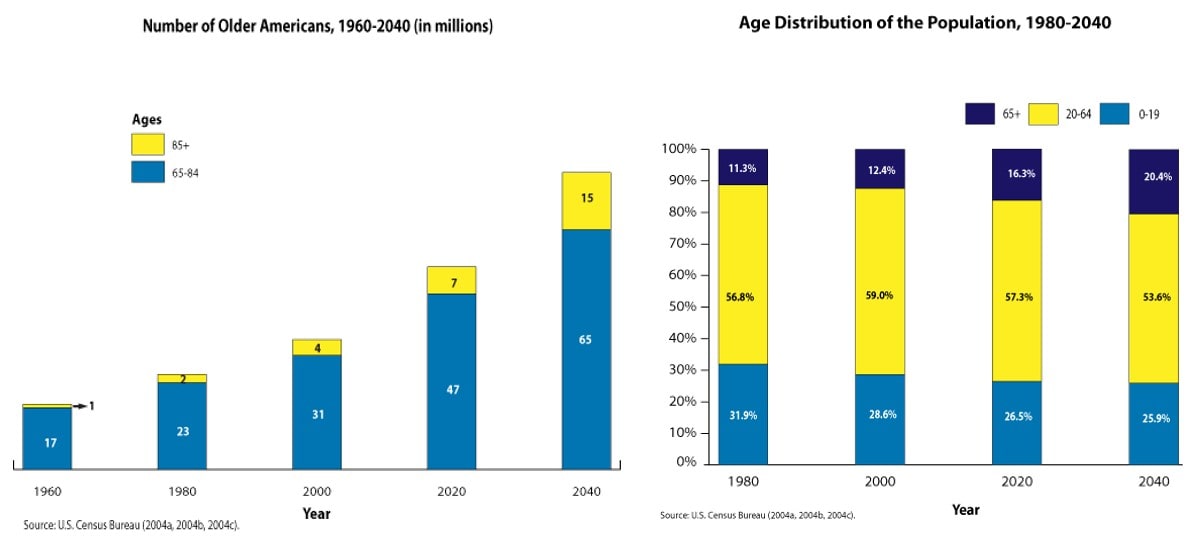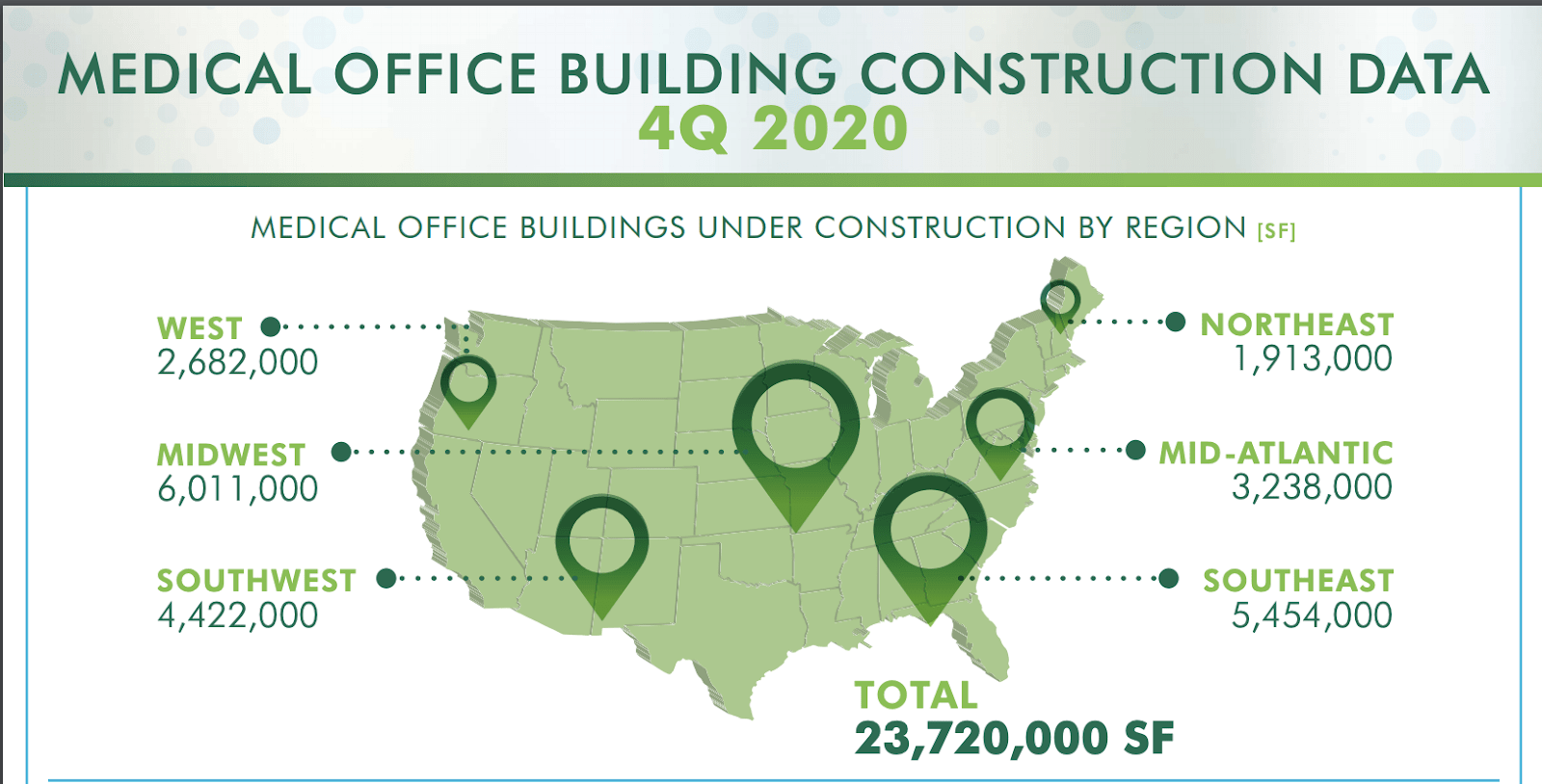| Thanks to the pandemic, we may have learned a thing or two about healthcare. The rise of telehealth, for example, could revolutionize healthcare. Health systems have also segmented and diversified into specialized facilities, notably in retail spaces. An aging population could make healthcare real estate demand "pop" Between 2000 and 2040, the number of Americans aged 65 and older could more than double, while adults aged 85 and older may quadruple. By 2040 almost one in five Americans could also be aged 65 or older compared to one in eight back in 2000. 
Why is this such a big deal for healthcare real estate? The older you are, the more healthcare needs you'll have. And when you look into where the oldest Americans live per the Census Bureau, it's what you would expect: Maine, New Hampshire, and Vermont top the list, with pockets across Arizona and Florida. If you then take that data and compare it to regions of the country that saw the most medical office building constructions, you'll see further overlap that paints a consistent picture about the opportunity: our aging demographics have a direct correlation to healthcare real estate demand. As the population ages, it could create rising demand for healthcare properties. 
Demographics aside, why healthcare real estate? - Better resistance to economic cycles. Healthcare real estate is one of the most defensive property types in the industry. It's easy to cut back on expenses like vacations when times get tough, but people need healthcare no matter how the economy is doing.
- Long-term nature of leases. Tenants usually sign leases with initial terms of at least 10 years, and renewal rates are high. Healthcare leases are also typically triple-net (NNN), which means tenants are responsible for property taxes, building insurance, and most maintenance expenses.
- Predictable revenue streams. According to JLL Research, healthcare/office REITs have consistently grown rents year over year since 2009, supported by stable fundamentals.
- High occupancy rates. In fact, medical office buildings have maintained greater than 91% annual occupancy rates since the fourth quarter of 2009.
How to invest? Some may be able to crowdfund or form a joint venture with other investors or try and do it themselves. But unless you have significant capital, these are high-risk, high-reward, illiquid and often inconvenient ways to invest. Another and more accessible way is to invest is through healthcare REITs. REITs are companies that own and/or operate income-producing real estate assets and trade on exchanges like stocks. There are more than a dozen healthcare REITs, which also tend to be some of the top dividend payers in the market. Here are some largest ones. But buyer beware. With REIT investing, rising interest rates tend to lower REIT prices because investors expect a similar increase in yield from income-oriented investments like REITs. Because price and yield have an inverse relationship, rising rates tend to send REITs lower. Don't be surprised if your REITs take a dive when the 10-year Treasury yield spikes. |
No comments:
Post a Comment